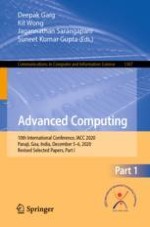2021 | OriginalPaper | Chapter
Analysis of Contextual and Non-contextual Word Embedding Models for Hindi NER with Web Application for Data Collection
Authors : Aindriya Barua, S. Thara, B. Premjith, K. P. Soman
Published in: Advanced Computing
Publisher: Springer Singapore
Activate our intelligent search to find suitable subject content or patents.
Select sections of text to find matching patents with Artificial Intelligence. powered by
Select sections of text to find additional relevant content using AI-assisted search. powered by
